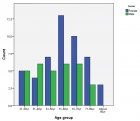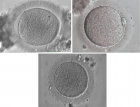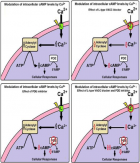Table of Contents
Prescribing Inertia or Not? Quantitative Investigation of Loop Diuretics Prescribing after Palliative Care Consultation among Patients with Heart Failure
Published on: 27th August, 2024
Purpose: Loop Diuretics (LD) are the first-line pharmacotherapy to address Heart Failure (HF)-associated edema and dyspnea. However, LD causes frequent urinary, resulting in inconvenience and possibly undermining the quality of life. While prescripti... on adjustment is an essential part of Palliative Care Consultation (PCC), it remains unclear how PCC affects the deprescribing of diuretics for adults with HF. Methods: We conducted a pre-post analysis of the percentage of HF patients who were prescribed LD in a national Electronic Health Record (EHR) database 12 months before and after the first PCC. The difference in prescription rates between the periods was determined. Adjusted associations of post-PCC LD prescription with pre-PCC LD prescription and patient’s characteristics, insurance, provider type, and clinical factors were quantified.Results: From 2010 to 2018, 5,969 patients with newly diagnosed HF received at least one PCC, among whom 2,539 (42.5%) were prescribed LD before and 1,552 (26.0%) after their first PCC. Despite a decrease in LD prescription rate encompassing the date of PCC, post-PCC LD prescribing was strongly associated with pre-PCC prescribing (aOR[95%CI] 3.2[2.8,3.7]) and varied by age at first PCC, year of HF diagnosis (aOR[95%CI] 2.1[1.9,2.4]) and months from HF diagnosis to first PCC. While our finding demonstrates reduced polypharmacy associated with PCC, the strong association between pre- and post-PCC indicates reverse therapeutic inertia. Future research should investigate the benefits and costs of polypharmacy among specific patient groups to help develop personalized treatment for HF. Show more >
Awareness of Myocardial Infarction in Nangarhar Residents: A Community Based Study
Published on: 27th August, 2024
Myocardial infarction is the leading cause of morbidity and mortality worldwide. The overall aim of the study was to evaluate community awareness about myocardial infarction.It was a community-based cross-sectional study conducted during one month in... cluding both male and female participants aged 18 years and over in Nangarhar province of Afghanistan. The percentage of awareness for risk factors was as follows: Diabetes (56.4%), Hypertension (43.4%), Elderly (42.1%), Obesity (39.8%), Physical inactivity (38.5%), Hyperlipidemia (37.6%), and Family history (33.8%). Furthermore, knowledge about symptoms and signs was as the following: chest pain (67.4%), pain in neck and jaw (57.8%), Dyspnea (50.7%), pain in arms (46.1%), weakness/fainting (40.1%), cold sweats (38.2%), nausea and vomiting (34.5%), anxiety (29.6%), fever (22.7%), hypotension/shock (20.1%), and silent myocardial infarction (11.3%). Moreover, 24% of participants did not know about the prevention strategies for myocardial infarction. Regarding treatment, 80.3% of participants exactly knew to go to the emergency room, 11.9% of participants would intend to go to a general practitioner (GP), 5.6% of participants would ask others for advice on what to do, and 2.2% of participants would wait to see if the symptoms go away spontaneously or if the symptoms were due to other diseases. The current awareness level about myocardial infarction especially atypical symptoms, risk factors, prevention, and treatment strategies in Nangarhar residents was insufficient, especially in females and healthy individuals, and warrants designing and implementing immediate awareness programs in order to avoid delay of treatment-seeking, misbeliefs about the disease and subsequent morbidity and mortality. Show more >
Contrast Echocardiography for the Detection of a Giant Right Coronary Artery Aneurysm: A Useful Diagnostic Tool
Published on: 22nd August, 2024
Coronary artery aneurysm is an uncommon condition defined as abnormal dilatation of the coronary artery.We report the case of a man admitted to the Emergency Department for suspected intestinal obstruction. At abdominal/thoracic Computed Tomography (... CT) it was reported a suspected pericardial cyst. Contrast echocardiography showed a clear pattern of blood flow inside the mass with a probable origin at a very limited region where it was also possible to sample an ECG-synchronized system-diastolic Pulse-Wave (PW)-Doppler pattern, typical for a coronary artery flow. Our suspicion of a giant coronary artery aneurysm was then confirmed by coronary CT and coronary angiography. The patient was transferred to a Cardiac Surgery center where he underwent surgical treatment for the aneurysm.Most coronary aneurysms are clinically silent and are often incidentally detected. Coronary angiography is the ‘‘gold standard’’ for diagnosis and evaluation of coronary artery aneurysms. Among non-invasive diagnostic techniques, Computed Tomography Coronary Angiography is the best method for coronary artery anatomy and coronary abnormalities. However, echocardiography with the use of a contrast agent, a cost-effective non-radiation nature, and a widespread use method, maybe a reliable method to detect and characterize the masses, allowing a differential diagnosis.Learning objective1. Recognition and evaluation of cardiac masses require first-line imaging methods such as echocardiography.2. The use of additional non-invasive (cardiac CT or MRI) and/or invasive imaging methods are often required. 3. Contrast echocardiography may be helpful, as second-line imaging methods, to better characterize the mass and approach the correct diagnosis. Show more >
Defibrillation of Atrial Fibrillation is not Associated with Increased Risk of Ventricular Fibrillation – The VCD-Trial (Clinical Trial of Electrical Therapy for Atrial Fibrillation using R-wave Guided Cardioversion Versus Defibrillation)
Published on: 19th August, 2024
Background: Because of a possible risk of induction of Ventricular Fibrillation (VF) by defibrillation of atrial fibrillation (AF) postulated by LOWN and coworkers, synchronized cardioversion is used worldwide. This prospective, randomized study asse... ssed the efficacy and safety between R-wave controlled cardioversion and defibrillation of AF at 2 study centers in Cologne, Germany. Hypothesis: Defibrillation is not significantly different from cardioversion primarily in the occurrence of VF or sustained Ventricular Tachycardia (VT) and secondarily in restoring sinus rhythm, inducing non-sustained VT, asystole, or bradycardia.Methods: 146 patients at an outpatient practice and 122 at the university hospital were randomized to cardioversion (n = 140) or defibrillation (n = 124).Results: Cardioversion was successful in 92.1% of cases and defibrillation in 87.1%. The difference in efficacy was not statistically significant. In n = 1 patients receiving defibrillation, VF occurred after the first shock (200J) and immediate defibrillation (200J) restored sinus rhythm. In the n = 1 case, asystole occurred during cardioversion which terminated spontaneously. In n = 1 patients cardioverted and n = 2 who were defibrillated, sinus bradycardia occurred requiring Atropine in two cases. There were no thromboembolic events within 10 days. N = 9 patients reverted to AF within two hours. No patients died. Conclusion: Electrical conversion of AF can be performed with similar results and low risk with both R-wave-triggered cardioversion and defibrillation. In particular, defibrillation with higher energies (> 100J) can be performed as effectively and safely without a statistically significant increased risk of VF or VT. There was no difference in efficacy and risk between electrotherapy performed in the outpatient and inpatient settings. Show more >
Single Coronary Artery Associated with an Arteriovenous Communication: An Incremental Diagnostic Value of Coronary CTA
Published on: 12th August, 2024
Single coronary artery and coronary arteriovenous communication are rare congenital cardiac anomalies with potentially harmful effects, making the diagnosis essential for the appropriate management. The coexistence of these two anomalies is exception... al. We present a case illustrating the diagnostic power of Coronary CTA in depicting this unusual combination. Show more >
Required Elements for Next-generation Prognostic Index beyond Left Ventricular Ejection Fraction in Heart Failure
Published on: 12th August, 2024
Many reports are showing no differences in prognosis between patients with Heart Failure (HF) with preserved and reduced ejection fraction. All-in-one analysis with a multivariable model, including clinical characteristics, blood test, comorbidity, a... nd echocardiographic indices, on clinical outcomes in patients with HF has not been performed rarely in previous studies. We have to accept the need to be more comprehensive in the outcome analysis of patients with HF and consider the intricate interplay of multiple variables in patient outcomes. Show more >
Imaging Challenge in Recurrent Spontaneous Coronary Artery Dissection (SCAD): A Case Report
Published on: 8th August, 2024
Spontaneous Coronary Artery Dissection (SCAD) represents a significant cause of acute coronary syndrome (ACS) in patient populations with low-risk cardiovascular profiles and, therefore can be sometimes underdiagnosed. On the other hand, it often pre... serves the typical clinical presentation of ACS which makes coronary artery angiography (CAG) execution mandatory. A 62-year-old woman with a history of recurrent SCAD presented to the emergency department for a new episode of acute chest pain with troponin elevation. CAG revealed an ambiguous angiography image suggesting a sub-occlusive type 2 SCAD involving the distal segment of the left circumflex artery. The patient was managed conservatively due to the absence of ongoing ischemia or hemodynamic instability. At the seven-day follow-up, a computed tomography coronary angiography (CTCA) was performed to better assess SCAD and detect concomitant associated arteriopathies. Optimized medical therapy was prescribed at the discharge and at one-month follow-up, no recurrence of symptoms was referred. Show more >
Improving Cardiac Rehabilitation Referral Rates in Patients with Coronary Heart Disease from Diverse Communities Using an Electronic Order System
Published on: 29th June, 2024
Introduction: Despite the benefits of Cardiac Rehabilitation (CR), local and national CR referral and participation rates remain low when compared to established cardiovascular therapies, especially amongst racial/ethnic groups. Objectives: This... study investigated the effects of the implementation of a CR program and electronic order set (EOS) in a large health system on CR referral and participation rates among a diverse group of patients with Coronary Heart Disease (CHD). Methods: A total of 360 patients from UCSD Health who presented with ACS were prospectively evaluated during initial hospitalization and 6- and 12-weeks post-discharge. The multivariable logistic regression model assessed referral and participation rates by week 1 and -12 post-discharge, adjusting for gender, age, race, ethnicity, geography, and referring physician subspecialty. Results: UCSD CR program implementation led referral rates to increase at week 1 (Pre- 38.6% and Post-54.9%, p = 0.003) and week-12 (Pre- 54.1% and Post- 59.8%, p = 0.386). Post-CR referrals were more likely at week-1 (OR: 1.93, 95% CI 1.27-2.95) and week-12 (OR: 1.26, 95% CI 0.79-2.00). EOS implementation increased referral rates at week-1 (Pre- 40.3% and Post- 58.7%, p < 0.001) and week-12 (Pre- 54.9% and Post- 60.4%, p = 0.394) with referrals more likely at week-1 (OR: 2.1, 95% CI 1.35-3.29) and week-12 (OR: 1.25, 95% CI 0.795-1.98). Participation in CR following EOS was more likely at both week-1 and week-12. Multivariable analysis revealed disparities in referral based on race, geographic location, and referring physician subspecialty. Conclusion: A CR program and EOS implementation were shown to increase referral rates with long-term potential for increasing referral and participation rates. Condensed abstract: This prospective study investigated the implementation of a Cardiac Rehabilitation (CR) program and Electronic Order Set (EOS) within the same health system on CR referral and participation rates. 360 patients with ACS were evaluated over 12 weeks. UCSD CR program and EOS implementation led referral rates to increase at week-1 and -12. CR participation was more likely to increase at week-1 and -12 following EOS. Multivariable analysis revealed disparities in referrals disproportionally affecting racial and ethnic minority groups and rural communities. CR and EOS implementation may increase CR referral rates for diverse patients with CHD. Show more >
Descriptive Study of the Urinary Tract Infections in Patients Admitted in the Cardiology Ward of Afghan Momand Medical Complex
Published on: 28th June, 2024
Urinary Tract Infection (UTI) is very common in our community most specifically in married females with numerous antecedent risk factors. The aim of the study was to find out about the current risk factors and clinical profile of urinary tract infect... ions in patients admitted to the cardiology ward of Afghan Momand Medical Complex for various purposes.It was a cross-sectional descriptive hospital-based study including both male and female patients visiting the Afghan Momand Medical Complex from January 2022 to June 2022. Of all 960 patients, 202 (21%) patients had urinary tract infections with gender distribution as 69 (34.2%) males and 133 (65.8%) females. In fact, 33 (16.3%) patients with urinary tract infections were single while the rest 169 (83.7%) patients were married. In addition, regarding clinical profile, the following clinic was respectively more prevalent: Dysuria in 120 (59.4%) patients, flank pain in 73 (36.1%) patients, urine frequency in 67 (33.1%) patients, urgency in 36 (17.8%) patients, fever in 24 (11.8%) patients, and nausea and vomiting in 19 (9.4%) patients. Moreover, the following risk factors were respectively the most common ones: Diabetes mellitus 86 (42.5%), pregnancy 30 (14.9%), stones 15 (7.4%), 10 (4.9%) devices, 10 (4.9%) prostatic hyperplasia, and 4 (2%) anatomical anomalies.Urinary tract infection is a common disease in the admitted patients in Afghan Momand Medical Complex specifically being more common in females and early 20s of the age. In fact, diabetes, pregnancy, and kidney stones were the leading associated factors with UTI. Moreover, dysuria, bladder emptying irritative symptoms, and abdominal pain were the most prevalent clinical profile of the patients. Special attention should be paid to infectious diseases in cardiac patients since infection itself is a stress and a threat to such patients and authorities should design special measures to prevent UTI in the general population to avoid a sum of burden on the health system. Show more >
Utilizing Smartphone ECG for Early Detection and Management of Ischemic Heart Disease: A Case Report
Published on: 24th June, 2024
Ischemic Heart Disease (IHD) remains a significant cause of morbidity and mortality worldwide. We present a case report of a 54-year-old individual presenting with symptoms suggestive of IHD, including palpitations and chest heaviness. Utilizing a Sp... andan device at home, the patient detected anteroseptal and lateral wall ischemia, prompting consultation with a cardiologist. Subsequent diagnostic evaluations revealed Left Ventricular Hypertrophy (LVH), concentric LVH, regional wall motion abnormality, and Grade I diastolic dysfunction. Hypertension and dyslipidemia were identified as prominent risk factors, with additional findings of carotid artery disease. Management strategies included antihypertensive medications, lipid-lowering therapy, and lifestyle modifications. This case underscores the complexity of diagnosing and managing IHD, highlighting the importance of comprehensive assessment and multidisciplinary care in optimizing patient outcomes. Show more >
Percutaneous Closure of Post-myocardial Infarction Ventricular Septal Rupture-experience From a Resource-limited Setup From Eastern Part of India
Published on: 20th June, 2024
Background: Post-infarction ventricular septal rupture (VSR) is a rare but lethal mechanical complication of an acute myocardial infarction (AMI). It results in 90% - 95% mortality within two months of diagnosis without any kind of intervention. Give... n high surgical mortality, transcatheter closure has emerged as a potential strategy as an alternative to high-risk surgical closure. Indian data on percutaneous device closure of post-AMI-VSR is limited hence we report our resource-limited single-centre experience with different kinds of occluder devices for closure of post-AMI VSR.Methods and results: In this single-centre, retrospective, cohort study, patients who underwent transcatheter closure of post-MI VSR between 2018 and 2024 at Health World hospitals, in Durgapur, West Bengal, were included. The primary outcome was a mortality rate of 30 days. The study population was eleven primary cases of post-MI VSR. The mean age of the population was 61 years. The majority of the patients had anterior wall MI (54.5%) and the remaining had inferior wall MI. Different kinds of devices (ASO, PostMI VSD device, Konar MFO) were used to close VSR. Successful closure was performed in 9 patients (81%) with minimal residual shunt in 2 patients. Out of 9 cases 3 patients expired, one was lost to follow up and the rest are doing well at 30 days follow-up. Conclusion: Transcatheter closure of PMIVSRs can be performed with different kinds of devices with high technical success, relatively low procedural complication rates, and 30 days survival even in a resource-limited setup as an alternative to high-risk surgical closure. Show more >
Outcome of Patients Presenting with Peripartum Cardiomyopathy in a Tertiary Care Center of Nepal
Published on: 29th May, 2024
Purpose: Peripartum cardiomyopathy is a rare life-threatening cardiomyopathy of unknown etiology with significant maternal morbidity and mortality. It causes heart failure due to left ventricular systolic dysfunction with or without left ventricular ... dilatation in the last month of pregnancy up to 5 months postpartum in previously healthy women. We aimed to determine short-term outcomes of peripartum cardiomyopathy clinically as well as in terms of left ventricular systolic function and to study the clinical profile and associated risk factors.Patients and methods: A prospective observational study was carried out in the Department of Cardiology of Manmohan Cardiothoracic Vascular and Transplant Center, Institute of Medicine, Kathmandu, Nepal, from July 2018 to January 2022. All the patients with peripartum cardiomyopathy who presented to the department of cardiology were enrolled in the study and re-evaluated with echocardiography at 6 months.Results: A total of 68 women met the inclusion criteria. The mean age was 28.38 ± 5.5 years (range 19 to 44 years). The most common clinical presentation was dyspnea followed by lower limb edema. Six (8.8%) patients presented during the last month of pregnancy whereas 62 (91.2%) patients presented in the postpartum period. The mean left ventricular ejection fraction on presentation was 30.01 ± 8.54. A full recovery was observed among 60.29% at 6 months. The mortality rate was 4.41%.Conclusion: Timely diagnosis and management of peripartum cardiomyopathy with standard therapy for heart failure leads to better recovery of left ventricular systolic function. Show more >
Non-surgical Techniques for Combined Rheumatic Severe Aortic and Mitral Stenosis – Case Series and Brief Review of Literature
Published on: 13th May, 2024
Rheumatic heart disease persists as a significant concern in developing regions, often resulting in multivalvular heart conditions. Treatment options are limited, though percutaneous transvenous mitral commissurotomy effectively addresses rheumatic m... itral stenosis. Non-surgical interventions for aortic stenosis include balloon aortic valvotomy and Transcatheter aortic valve replacement (TAVR), tailored to patient factors like age and comorbidities.We describe two cases of Rheumatic multivalvular disease which were managed non-surgical. The first case is a pioneering procedure performed on a young patient combined percutaneous transvenous mitral commissurotomy with balloon aortic valvotomy, guided by 4-dimensional transoesophageal echocardiography (4D TEE). This represents the first documented instance in medical literature, showcasing the potential of integrated interventions and advanced imaging techniques. In the second challenging case involving a heavily calcified, retrovirus, and Hepatitis B positive 55-year-old, a staged approach was adopted, involving percutaneous transvenous mitral commissurotomy followed by Transcatheter aortic valve replacement (TAVR). Despite complexities, this sequential strategy demonstrates the adaptability of transcatheter techniques in managing complex valvular pathologies. These cases highlight the evolving landscape of interventional cardiology and underscore the importance of tailored, multidisciplinary approaches in optimizing outcomes for patients with rheumatic heart disease and multivalvular involvement, especially in resource-limited settings. Further exploration and dissemination of such innovative strategies hold promise for enhancing cardiac care quality and expanding treatment options globally. Show more >

HSPI: We're glad you're here. Please click "create a new Query" if you are a new visitor to our website and need further information from us.
If you are already a member of our network and need to keep track of any developments regarding a question you have already submitted, click "take me to my Query."




















































































































































